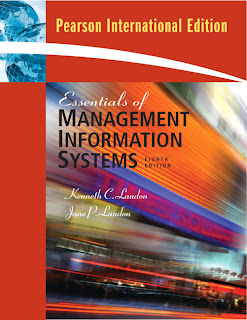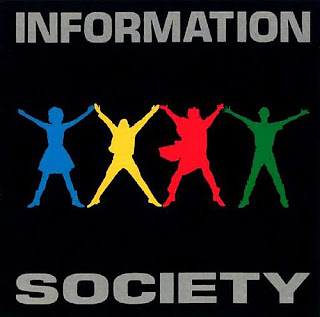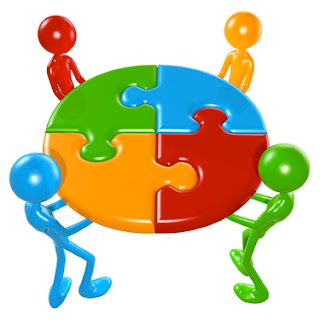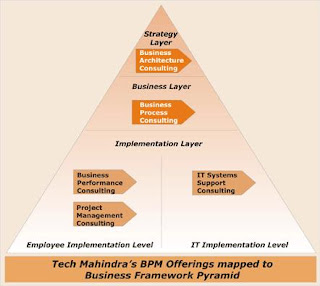Attractiveness-Strength MatrixIn the attractiveness-strength matrix, each business's location is plotted using quantitative measures of long-term industry attractiveness and business strength/competitive position.
Benchmarking
Benchmarking has proven to be a potent tool for learning which companies are best at performing particular activities and then utilizing their techniques (or "best practices") to improve the cost and effectiveness of a company's own internal activities.
Board of Directors
The central role of the board of directors in the strategic management process is (1) to critically appraise and ultimately approve strategic action plans and (2) to evaluate the strategic leadership skills of the CEO and others in line to succeed the incumbent CEO.
Business Model
A company's business model deals with whether the revenue-cost-profit economics of its strategy demonstrate the viability of the enterprise as a whole.
Business StrategyBusiness strategy concerns the actions and the approaches crafted by management to produce successful performance in one specific line of business; the central business strategy issue is how to build a stronger long-term competitive position.
Cash Cow
A cash cow business is a valuable part of a diversified company's business portfolio because it generates cash for financing new acquisitions, funding the capital requirements of cash hogs, and paying dividends.
Cash Hog
A cash hog business is one whose internal cash flows are inadequate to fully fund its needs for working capital and new capital investment.
Company CompetenceA company competence is the product of learning and experience and represents real proficiency in performing an internal activity.
Core Competence and Distinctive CompetenceA core competence is something that a company does well relative to other internal activities; a distinctive competence is something a company does well relative to competitors.
Corporate Culture
Corporate culture refers to a company's values, beliefs, business principles, traditions, ways of operating, and internal work environment.
Corporate Intrapreneuring
Corporate intrapreneuring relies upon middle and lower-level managers and teams to spot new business opportunities, develop strategic plans to pursue them, and create new businesses.
Corporate Restructuring
Corporate restructuring involves making radical changes in the composition of the businesses in the company's portfolio.
Corporate Strategy
Corporate strategy concerns how a diversified company intends to establish business positions in different industries and the actions and approaches employed to improve the performance of the group of businesses the company has diversified into.
Cross-Market Subsidization
Cross-market subsidization-supporting competitive offensives in one market with resources and profits diverted from operations in other markets-is a powerful competitive weapon.
Differentiation Strategy
The essence of a differentiation strategy is to be unique in ways that are valuable to customers and that can be sustained.
Divestiture
Divestiture usually takes one of two forms-spinning a business off as an independent company or selling it to another company.
Driving Forces
Industry conditions change because important forces are driving industry participants (competitors, customers, or suppliers) to alter their actions; the driving forces in an industry are the major underlying causes of changing industry and competitive conditions.
Economies of Scope
Economies of scope arise from the ability to eliminate costs by operating two or more businesses under the same corporate umbrella; the cost-saving opportunities can stem from strategic fit relationships anywhere along the businesses' value chains.
Environmental Scanning
Managers can use environmental scanning to spot budding trends and clues of change that could develop into new driving forces.
Functional Strategy
Functional strategy concerns the managerial game plan for running a major functional activity or process within a business-R&D, production, marketing, customer service, distribution, finance, human resources, and so on; a business needs as many functional strategies as it has major activities.
Global competition
Global competition exists when competitive conditions across national markets are linked strongly enough to form a true international market and when leading competitors compete head to head in many different countries.
International (multinational) company
A company is an international (or multinational) competitor when it competes in a select few foreign markets. It is a global competitor when it has or is pursuing a market presence on most continents and in virtually all of the world's major countries.
Key Success Factors
Key success factors concern the product attributes, competencies, competitive capabilities, and market achievements with the greatest direct bearing on company profitability.
Mission Statement
A company's mission statement is typically focused on its present business scope-"who we are and what we do"; mission statements broadly describe an organization's present capabilities, customer focus, activities, and business makeup.
Multicountry (or multidomestic) competitionMulticountry (or multidomestic) competition exists when competition in one national market is independent of competition in another national market-there is no "international market," just a collection of self-contained country markets.
Objectives
Objectives are an organization's performance targets-the results and outcomes it wants to achieve. They function as yardsticks for tracking an organization's performance and progress.
Operating Strategy
Operating strategy concerns how to manage front-line organizational units within a business (plants, sales districts, distribution centers) and how to perform strategically significant operating tasks (materials purchasing, inventory control, maintenance, shipping, advertising campaigns).
Organizational Strategy
An organization's strategy deals with how to make management's strategic vision for the company a reality-it represents the game plan for moving the company into an attractive business position and building a sustainable competitive advantage.
Resource Strengths and Weaknesses
A company's resource strengths represent competitive assets; its resource weaknesses represent competitive liabilities.
Strategic Cost Analysis
Strategic cost analysis involves comparing how a company's unit costs stack up against the unit costs of key competitors activity by activity, thereby pinpointing which internal activities are a source of cost advantage or disadvantage.
Strategic Group MappingStrategic group mapping is a technique for displaying the different competitive positions that rival firms occupy in the industry.
Strategic Intent
A company exhibits strategic intent when it relentlessly pursues an ambitious strategic objective and concentrates its competitive actions and energies on achieving that objective.
Strategic Management
The term strategic management refers to the managerial process of forming a strategic vision, setting objectives, crafting a strategy, implementing and executing the strategy, and then over time initiating whatever corrective adjustments in the vision, objectives, strategy, and execution are deemed appropriate.
Strategic Objectives
Strategic objectives relate to outcomes that strengthen an organization's overall business position and competitive vitality; Financial objectives relate to the financial performance targets management has established for the organization to achieve.
Strategic Plan
A strategic plan consists of an organization's mission and future direction, near-term and long-term performance targets, and strategy.
Strategic Vision
A strategic vision is a roadmap of a company's future-providing specifics about technology and customer focus, the geographic and product markets to be pursued, the capabilities it plans to develop, and the kind of company that management is trying to create.
Strategy ExecutionStrategy execution deals with the managerial exercise of supervising the ongoing pursuit of strategy, making it work, improving the competence with which it is executed, and showing measurable progress in achieving the targeted results.
Strategy ImplementationStrategy implementation concerns the managerial exercise of putting a freshly chosen strategy into place.
Strategy
A company's strategy consists of the combination of competitive moves and business approaches that managers employ to please customers, compete successfully, and achieve organizational objectives.
Sustainable Competitive Advantage
A company that can expand its stock of strategic assets faster and at lower cost than rivals obtains sustainable competitive advantage.
TQM
TQM entails creating a total quality culture bent on continuously improving the performance of every task and value chain activity.
Unrelated Diversification
A strategy of unrelated diversification involves diversifying into whatever industries and businesses hold promise for attractive financial gain; exploiting strategic-fit relationships is secondary.
Value Chain
A company's value chain identifies the primary activities that create value for customers and the related support activities.
 A.2.3.1
A.2.3.1 


 A.2.1.1
A.2.1.1 A.1.9.1
A.1.9.1 A.1.8.1
A.1.8.1




 structures
structures